Huish Outdoors, in conjunction with Apple, has today launched the new Oceanic+ dive app for the Apple Watch Ultra. As you may remember, the Apple Watch Ultra has built-in depth gauge hardware that’s certified to 40m/130ft. However, the also built-in Apple app (software) called ‘Depth’ is super limited to just giving you the current depth, and skips most of the dive computer-related features, including important bits like ascent warnings, safety stops, and other safety features.
For that, Apple has partnered with Huish Outdoors, which has its Oceanic+ app. This app has been heavily highlighted by Apple as the closest thing to an ‘official’ Apple dive app that you’ll get, with the two companies working closely together on it – including highlighting it in their annual September keynote. The app has both free and paid versions, including both day-pass and monthly/annual/family subscriptions.
In any case, I’ve been using the app – both in the depth chamber to simulate various conditions (like I did previously with Apple’s Depth app), but also in real life, with a dive last week to see it all in action. In doing so I concurrently compared side by side (well, opposite wrists) with Garmin’s sorta-similar priced Descent G1 ($549) dive computer. While both of these units have dive functionality, they also have the rest of their smartwatch features too. One skewed more towards daily smartwatch functions (Apple), and the other skewed more towards endurance watch features (Garmin). This isn’t a comparison post, but I’ll make some notables along the way.
With that, let’s begin.
Quick Features Overview:
The Oceanic+ app is designed to be a full-featured dive computer. However, what you define as full-featured will probably vary based on your dive skill/certification/goals. The main target audience for this app is recreational divers, or more casual divers. For example, people who dive on vacation once or a few times per year. Or simply those that stay within the depth limits and want online logbook integration. Probably the single biggest gap that you’ll find when comparing the Apple Watch Ultra (or the Garmin Descent G1) to a more traditional dive watch is the lack of air integration. Meaning, it won’t track how much air (or other gas) you have in your tanks. That’s still on you.
And that gets to the second piece. Apple specifically notes that you should “always use a secondary depth gauge and timer/watch”. Which, as a reminder, is what any diver should be doing, and every other watch company states the same. And that’s no different than how 99% of recreational/tourism dives I’ve been on work: They give you the depth gauge as part of your regular gear, as well as a secondary dive computer with depth gauge.
Ok, so what are the core features the Oceanic+ app does have then – see below. They’ve got a giant table on their site that shows what’s free and not free, which I then tried to decode further below.
– Snorkeling/Dive modes
– Shows Depth, Maximum Depth
– Compass and Compass/Heading Lock
– Shows Safety Warnings and Safety Stop
– Ascent rate warnings
– Maximum depth warning(per dive planner, or 40m)
– Cold warnings (per dive planner, or if temp is 0°C)
– Shows Last Dive Time, Elapsed Time, Total Activity Time
– Logbook with dive details, GPS location, total dives, longest dive, pictures deepest dive, etc.
– Adds watch face complications, including no-fly time, time since last dive, etc.
– Decompression info (paid)
– Dive planner – NDL, Max Dive Depth, etc.. (paid)
– Tissue loading (paid)
– Forecasts – Weather/Temp/Tide/UV – (paid)
And then that gets us to pricing. Here’s the official pricing for the paid bits:
– $4.99/day
– $9.99/month
– $79.99/year
– $129/year (Family sharing up to 5 people)
When this was first announced, there was a fair bit of ‘variety’ (to put it politely) in how Apple and Oceanic noted the pricing to the press. The numbers varied by who you talked to, and there didn’t seem to be much consistency in whether there was any free mode at all. However, once the dust finally settled, the options are actually fairly reasonable.
Given how much you’re likely to spend on a day of diving at most resorts while travelling, an extra $5 isn’t much. Likewise, if you dive far more frequently, then $79/year seems reasonable too, primarily if you already had the Apple Watch Ultra and can now use it as your primary dive computer (with typical depth gauge on regular backup).
Obviously, some will point out that you can buy a cheap Cressi model dive computer for $230. And sure, you can. Just like you can buy a cheap watch for $12 that tells you the time (inclusive of sharks). Both have the core functionality required, but neither have all the advanced features. It simply depends on what you want out of a dive watch. I suspect for most people that are interested in this, it’s again casual divers that already own an Apple Watch Ultra that dive 1-4 times a year at a resort, and simply want that in an electronic logbook. This solves that.
Certifications and Testing:
As for the Apple Watch Ultra hardware itself, let’s talk about that and how it’s certified. There are two different components here:
– Water Resistance of the hardware to a minimum of 100m (328ft)
– Certified as EN13319 compliant (dive operation). The Depth app works to a maximum depth of 40m (130ft)
For fun, I spent €58.86 to purchase and download the EN13319 international specifications document. You’re welcome. Within that document there’s a slew of tests that companies do. However, I’ve pulled out the key ones:
– Hammer test (not kidding, there’s an entire ISO document on how to do the hammer test)
– Static force test of 150n pressure while on a wrist fixture
– Pressure test to double the depth pressures*
– Underwater pressure cycling 200 times to 110% of maximum depth of device claim
– Sea water resistance test for 24 hours
– Temperature tests cycling between above and below water temps at intervals from 20°C down to 2°C, and air temps up to 60°C.
– Readability tests, timer accuracy tests, glove tests, responsiveness tests, etc…
But wait, it gets better, there’s actually a specific order of the testing. Failure at any point causes failure of the test. So basically, first you temperature cycle it a gazillion times, then you whack it with a hammer, then you leave it underwater for a day, then press hard on it, then you cycle it 200 times, and on, and on. Again, this has to be done in this specific order:
1) Temperature cycling
2) Shock test (hammer)
3) Sea water resistance (24-hour test)
4) Static force wrist fixture test (150n)
5) Pressure cycling (200 times to 110% of maximum depth)
6) Water tightness test
7) Readability test
8) Accuracy test (inclusive of over-pressure test)
9) Dive timer test
10) Operability test (using gloves to push buttons at depth)
*This is an interesting one, as Apple doesn’t specify if they certified EN13319 to 40m, or certified to 100m. There’s a specific pressure table they have to follow. The nearest value on this predefined table to 40m is 45m, for which they’d have over-pressure tested to 90m. Whereas if they certified to 100m, they’d have over-pressure tested to 200m. There’s an error margin allowed of +10m & –15m. For perspective, this is the exact same certification that Garmin uses on their dive watches, and the same dive certification most companies use.
Realistically, there’s no chance that Apple is going to expose themselves legally here to claiming something that it’s not. They’ve done the actual certifications pieces, so there’s that. And undoubtedly the Apple Watch Ultra can probably withstand far greater than that, though as you’ll see below, it purposefully stops reporting depth below the claimed limit.
Got all that? Good, let’s go diving.
A Test Dive:
Ok, with the basics out of the way, I headed to Nemo 33, just outside of Brussels (Belgium). I had previously wanted to go diving here back in September when the Apple Watch Ultra first came out, but was hesitant to rent a car and drive the 2-4 hours, only to find out it’s closed. They don’t maintain their website with their hours, and they fail to answer the phone. However, after a total of 22 attempted phone calls over three days (I’m serious), they finally answered the phone, and I was able to confirm their hours. Albeit, that final time they picked up was after we rented the car, drove a few hours, and were only 25 mins away from the facility.
In any event, they were super nice once we managed to get them on the phone – and we basically had the place to ourselves. In case you’re wondering about their hours, I put it below in the FAQ section. It cost us $70 total for both of us, and all the gear rental for the hour or so.
The indoor facility is awesome, and has a depth of 33 meters (108ft), but also interestingly, it is maintained at 33°C (91.4°F). Making it perfect in terms of depth for our tests, but also ideal in terms of not needing a wetsuit. There are also a few different levels/areas of the facility.
Before starting my dive, I configured the settings in a combination of the app as well as the watch (Oceanic+ app). Specifically, I changed my preference to meters/Celsius, but also validated it was set for Scuba, versus snorkel. In this case, I didn’t create a specific dive plan, though we’ll cover that later. The Apple Watch Ultra is configured to automatically open up a preferred app when you go underwater (once it detects depth). By default, that’s Apple’s own ‘Depth’ app. However, it’ll change to the Oceanic+ app once installed. You can change that of course if you want.
In my case, I opened up the Oceanic+ on the watch manually, as I wanted to validate it maintained the Scuba settings, as well as see the transition over so I could show you.
However, you can also set up your dive settings, including air or nitrox, and any alarms you want:
Had I been diving outside, I could have used the location planner in the app to get weather/tide details for that location. Here’s a spot nearby that I have zero intention on going to today, but hey, maybe on a warmer day I’d be convinced:
With that set, down I went. I also had started a dive on the Garmin Descent G1 at the same time. I noticed that the Garmin started detecting the start of the dive slightly faster as I descended that first meter or two, and then the Apple Watch Ultra kicked in. This didn’t seem to do anything with accuracy of the depth meter, but rather, the trigger point for when a dive ‘starts’. I suspect Oceanic is trying to avoid the typical scenario where you’ve jumped off a boat, and are now perhaps bobbing on the surface waiting for a group to get ready (not wanting to burn air going down immediately). In this case, I find Garmin tends to trigger if my arm goes down towards my legs. Anyways, this is all just geeky curiosity, ultimately, by the time you descend your own body height, it’s tracking. Note: These two images were taken a few seconds apart in slightly different places.
Fun side note: I filmed the first 5 meters or so in depth on an iPhone 14 Pro. I also had a GoPro Hero 11 Black and Hero 11 Black Mini with me. But neither the Hero 11 Black Mini (no dive case) or iPhone 14 Pro would survive the full dive profile. So I left them on a shelf before I descended down the silo. Secondary fun side note: I noticed that Oceanic themselves has an iPhone dive case they’re aiming to start selling in Summer 2023. I’d be totally game to buy something like that, but a price of $489 is kinda crazy for a phone case when other dive phone cases are a fair bit cheaper, and launching it during the summer ahead of an annual phone release cycle in September is less-optimal (which probably won’t be compatible with the next phone). Love the idea though, given the quality I get out of my phone these days (also: this comes from someone who has spent thousands and thousands of dollars on underwater DSLR dive cases). Anyways…
As we slowly descended, the Apple Watch Ultra appeared the track the depth in virtual lockstep to the Garmin Descent G1. They were both identical within 0.5m virtually the entire time.
There were some placards placed on the ladder heading down, which had a slight offset to both units of about 0.3-1.0m. Frankly, I’d trust the two dive computers (which also match my reference depth gauge) rather than the rope-connected signs. Here you see 24.4m on the unit, and 25m on the sign connected via rope.
Once we reached the bottom, the depth gauge read 31.7m, and once I put my wrist on the floor, 32.5m. That makes some sense, as the bottom was actually a grate, and then below that about another meter or so was the real bottom, I suppose the actual 33m in depth that Nemo33 has its namesake from.
At this point, we kinda just hung out there. The only two other people in the facility with us were already down there playing with a Nerf dart, burning time until they had to ascend. Unlike some openwater locale, there’s not much to do at the bottom of a 33m wannabe missile silo. However, the Apple Watch Ultra kept watch over our time down there, slowly counting down (sorry, the lighting is pretty minimal there, and the GoPro Hero 11 in the dive case isn’t great in low-light):
You can rotate through the different data pages by using the digital crown. There are four screens:
Primary screen: Current depth, no-deco time, variometer, water temp, mins to surface, and dive time
Second screen: Current depth, no deco time, max depth, ascent rate, battery level
Compass screen: Current depth, no deco time, compass heading, compass direction (and ability to lock heading)
Air screen: Current depth, no deco time, gas, max PPO levels, and your dive plan config
One of those data pages is the compass screen. You can hold to set a compass heading, and then it’ll keep tracking using the magnetic compass. Note, there is no GPS underwater.
Meanwhile, the Garmin Descent G1 in these low-light conditions is definitely harder to read than Apple’s brilliant battery-blowtorch of a display. However, having done many other dives with the Descent G1 in openwater (overcast and sunny days), it’s perfectly fine in outdoor conditions where the sun is far brighter.
A few minutes later, we reached 0:00 time left if we wanted to avoid decompression stops (No Decompression Limit), and the Apple Watch Ultra, almost to the second with the Garmin Descent G1, alerted us to the fact that we should head up. Both of these are based on the Bühlmann ZHL-16 algorithm, hence why they’d alert at virtually the same moment.
Interestingly, within 30 seconds of that, the two other older guys also started heading up. So whatever they were using (it looked not-fancy) had them on the same timetable. As we ascended it tracked our ascent. Given we didn’t ascend super fast, we didn’t get any ascent warnings (I show that in the FAQ section). As we reached 5m (15ft), it alerted us to the safety stop, and started counting down:
(One could argue that, technically speaking, the point of an NDL dive is to avoid a safety stop, but both companies alerted us either way. I’m not sure if that’s because they do so every single dive, or because maybe we stayed a few seconds too long after it triggered, and thus forced a safety stop. Either way, a safety stop is always a good practice anyway.)
You’ll get a safety stop clear message after that completes:
The Garmin was identical here too, both in terms of when it triggered the automatic safety stop, as well as when timing. I don’t remember hearing an audible safety clearance alert from the Apple Watch, but I do remember hearing one from the Garmin. It’s plausible I simply missed it.
With that, we meandered a bit more around in the shallows for a few minutes as we came up. I mean, why not take pictures in a cool place like this?
There were even water spin bikes here, in case I really wanted to get into things. Albeit, just don’t take a spin off the deep end:
Once things were set, I surfaced up. Unfortunately, taking a few photos next to the spin bikes apparently triggered a 1-minute and 1-meter deep dive, removing my summary screen from the main dive. So I don’t have a picture of that on the watch. I’ve annoyingly seen the Garmin watch do the exact same thing outside on a real drift dive, while waiting for a boat pickup.
However, once out of the water, I could go back to the dive profile in the watch and see it there:
Of course, the whole point of using a fancy connected dive watch is to be able to have all of this end up in an electronic logbook of some sort. And it instantly does that here as well. I can crack open the Oceanic+ app, and then look at all the dive details there. Here’s that:
And there are also some notes sections down below that you can tweak too:
Finally, if you go in to your watch face, you can add watch face complications from the Oceanic+ app, these include, for example, your no-fly time (time remaining until flight), as well as time since last dive:
Ultimately, in terms of my dive experience, it all just worked, and worked fairly well. About the only complaint I’d have was that the digital crown underwater seemed a bit finicky in terms of over-spinning the data pages. Getting it exactly on the page I wanted was sometimes tricky. I’d imagine with gloves it’d be messier. It’s almost like the sensitivity was…well…too sensitive. But that’s a minor nit overall. Of course, I also wasn’t aiming to do something super complex with it either, in terms of a dive profile. But again, that’s not really the goal here.
Odds & Ends (an FAQ):
Next, there are lots of questions on how this all works in various scenarios. So think of this more as an FAQ than some sort of beautifully composed multi-paragraph short story. And what’s cool here is that I can take out my dive chamber to demonstrate a variety of things that would simply be impractical or too dangerous to do in real-life. Or, at a minimum, stupid to do in real-life. Here goes:
What happens if you exceed the depth?
Remember, there are two different ‘max’ values on the Apple Watch Ultra. The first is the hardware certification overall, which is for 100m deep. For 99% of people, that certainly won’t be an issue. The second is then the depth gauge, which is specified for 40m/130ft. You can see here I brought it to 42m/138ft. At which point it starts flashing the Max Depth warning:
Keep in mind you’ll also get the warning if you go beyond whatever depth you set for that dive in the dive planner:
Beyond 44m/130ft, it’ll just show exceeded depth, and won’t show the real value anymore. Some might argue that a dive watch should always show the depth forever, even if you go too deep. And while the spirit of that seems laudable, in reality, every dive computer has maximum specifications. Apple is super clear the specification here is 40m/130ft, which is beyond a typical PADI Advanced Open Water certification level, and realistically, if you’ve found yourself that deep, you shouldn’t be there, and knowing you should go up is really the only thing that matters (which the unit brightly and unavoidably alerts you to).
What happens if you ascend too fast?
Ascending too fast is defined as greater than 30ft/9m per minute, in which case you’ll get an ascent rate warning. Here’s what that looks like in the chamber when I ascended like a rocket ship:
Is there a free diving mode?
No, not today. Though, Oceanic has two things to say about this in their FAQ section:
“There is a snorkeling mode you can use to get depth and time underwater, which is available in the free version of the app. More advanced freedive features will be included in the future.”
…and…
“Not yet – check back soon for updates. There is a snorkeling mode you can use to get depth and time underwater. More advanced freedive features will be included in the future.”
So, seems like that’s on the way.
Does it write this data in any open way?
It depends a bit on how you define open, but yes, kinda. In addition to any data recorded by the Oceanic+ app, much of the core data is also written to Apple Health at various intervals. You can crack open Apple Health and see metrics like depth, water temp, and so on. The recording rate varies. In the case of water temp, it seems to be at anything from 10 minutes down to 1-minute intervals. Perhaps it triggers based on change of temp, it’s hard to know as both of my tests are in almost universally identical water temp (whereas outside the water temp would decrease as you go down).
Meanwhile, water depth seems to be at roughly 2-3 second intervals. Again, this can be viewed as meters or feet, like any other metric.
From there, any other app could consume this data and create nifty dive profiles. The source for this data is the Apple Watch hardware itself, not the Oceanic+ app. Meaning, the Apple Watch Ultra is recording and putting this data in Apple Health in the same manner as heart rate readings.
Wrap-Up:
If you had told anyone just a few months prior to the Apple Watch Ultra launch, that Apple would make a dive watch – they’d mostly have laughed at you. Why would Apple go after such a relatively small market? Well, the same could be said about their also-announced plans for running power, even more niche by comparison. However, Apple didn’t exactly make a dive watch. They made a depth gauge that can be used by app makers as a dive watch. In theory, a dive watch includes all the bits that Oceanic+ brings to the table. Whereas Apple’s own ‘Depth’ app is merely a digital version of a standard depth gauge you’d find attached to a regulator. And just like that analog version, it lacks any safety-related features.
As for the Oceanic+ app, it’s a solid starting point, especially for casual divers. It includes everything pretty much any casual diver would need, and does it in a silly easy-to-use fashion. I mean, you literally just drop in the water and the app automatically starts. You don’t even need to press anything to use the app. During the dive, it dutifully let me know when it was time to head up, as well as would have alerted me had I ascended too fast. It also kept track of my safety stop and reminded me of that as I passed up through that depth.
The only thing missing for many divers that border more between ‘casual vacationer’ and ‘more frequent recreational’ is air integration. That’s a trickier nut to solve. In order to offer that, they’d need some sort of analog wireless transmission inside the Apple Watch Ultra. Digital transmissions like Bluetooth or WiFi simply don’t work underwater more than a few centimeters. Instead, companies have secondary modules that cost about $400 (for Garmin/Suunto/Oceanic modules), and then those transmit from the tank to the watch (via signals that work underwater). It’s plausible Apple already has communication modules inside the Apple Watch Ultra that could be leveraged with future or current external pods, but frankly, we won’t know till (or if) that ever happens.
For now though, the dive features on the Apple Watch Ultra do two things: They offer Apple Watch Ultra customers who dive casually an easy path to have dive information on their existing watch, without spending $500-$1,200 for that data. For people doing vacation dives, that’s awesome. Secondarily though, this applies significant pressure to other dive and endurance sports watch companies. For companies like Garmin, they have traditionally held this feature only in their dive watches, it virtually forces them to include diving/freediving features in something like a Fenix 8 series watch down the road. And for the legacy dive watch companies? Well, they’ll probably double down on both features related to technical diving, or try and figure out how to make their smartwatch offerings more appealing.
Either way, as always – competition is good. And that competition has certainly now arrived.
With that – thanks for reading!
Found This Post Useful? Support The Site!
At the end of the day, I’m an athlete just like you looking for the most detail possible on a new purchase. These posts generally take a lot of time to put together, so if you're shopping for the Apple Watch Ultra (Ocean Band Yellow) or any other accessory items, please consider using the affiliate links below! As an Amazon Associate I earn from qualifying purchases. It doesn’t cost you anything extra, but your purchases help support this website a lot.
And of course – you can always sign-up to be a DCR Supporter! That gets you an ad-free DCR, access to the DCR Quarantine Corner video series packed with behind the scenes tidbits...and it also makes you awesome. And being awesome is what it’s all about!


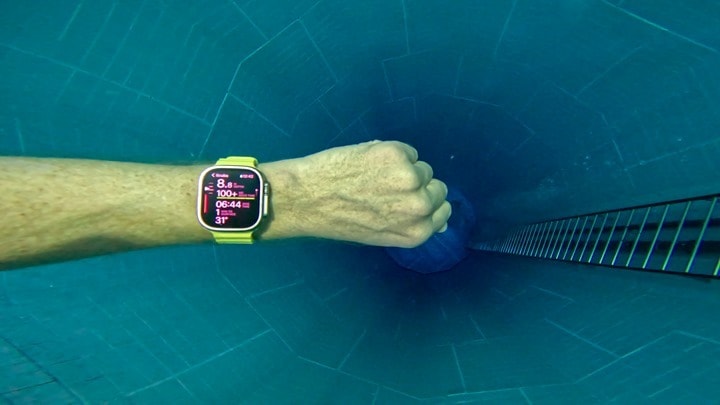
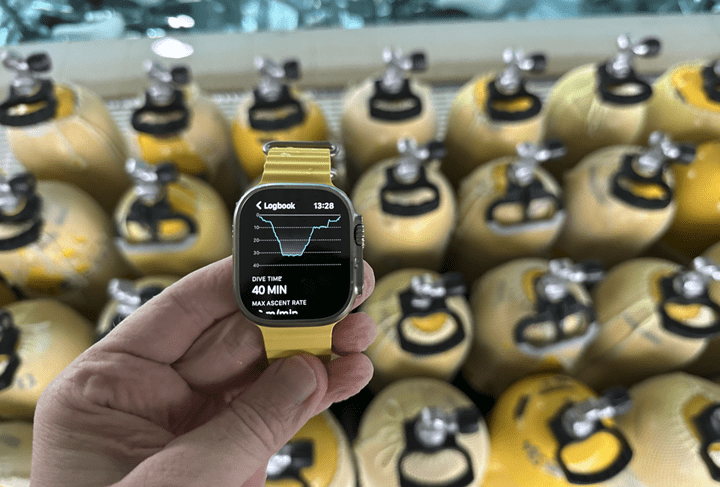
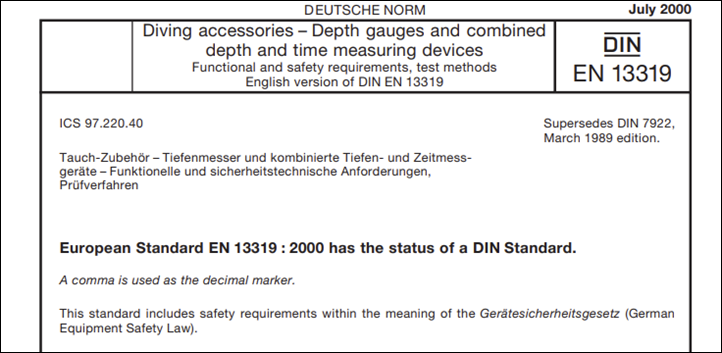
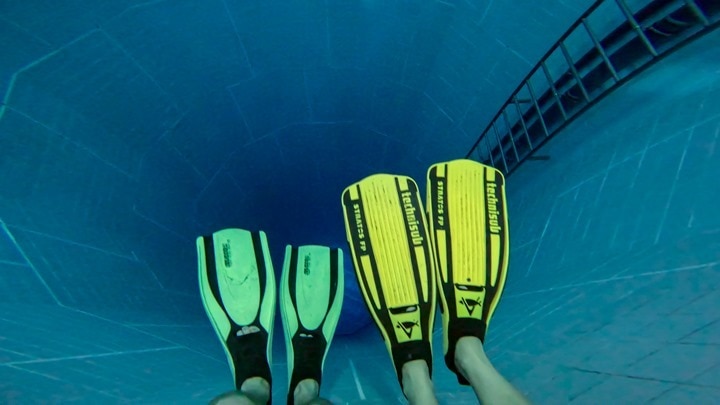
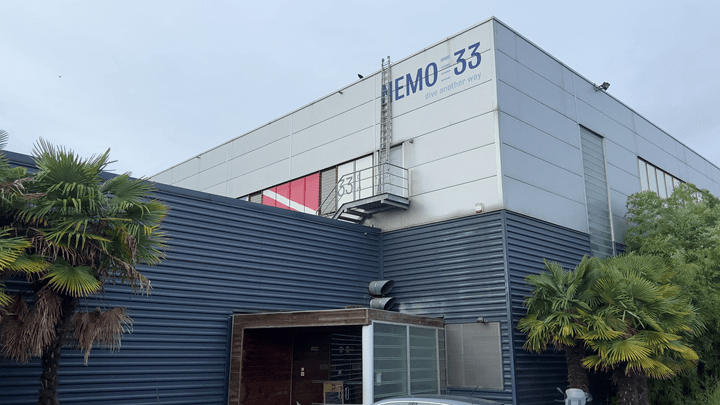
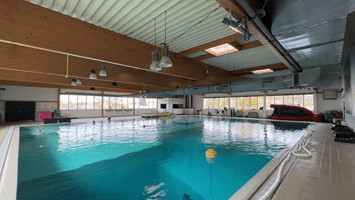
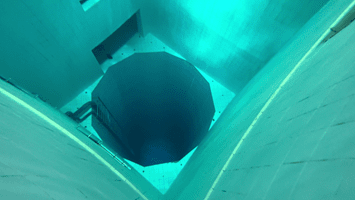
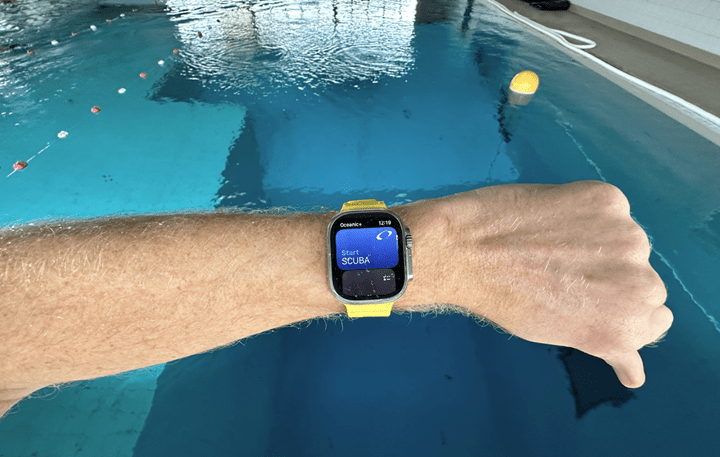
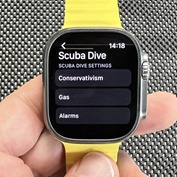
![clip_image001[6] clip_image001[6]](https://media.dcrainmaker.com/images/2022/11/clip_image0016_thumb.jpg)
![clip_image001[8] clip_image001[8]](https://media.dcrainmaker.com/images/2022/11/clip_image0018_thumb-1.jpg)
![clip_image001[10] clip_image001[10]](https://media.dcrainmaker.com/images/2022/11/clip_image00110_thumb-3.jpg)
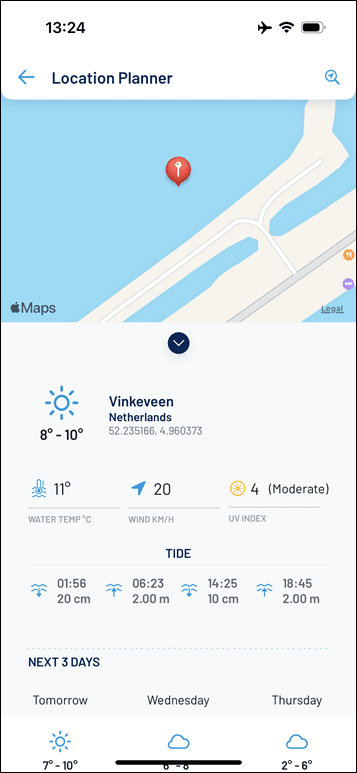
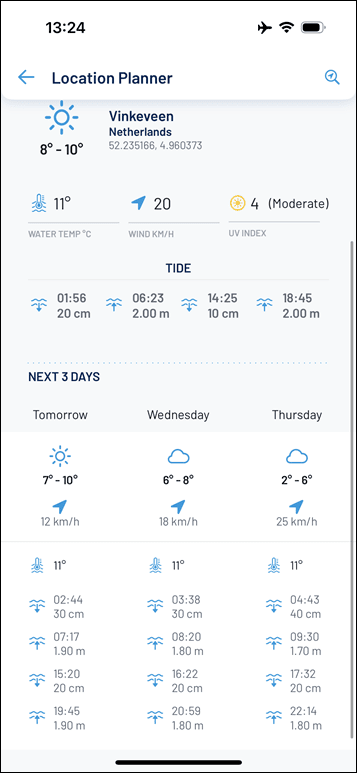
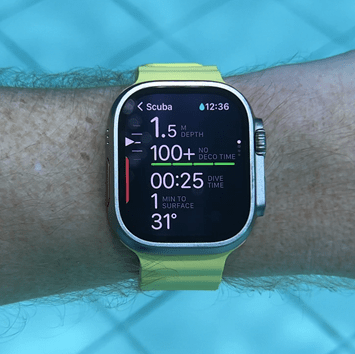
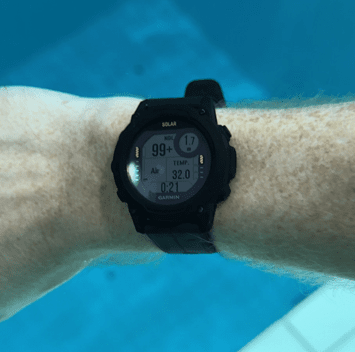
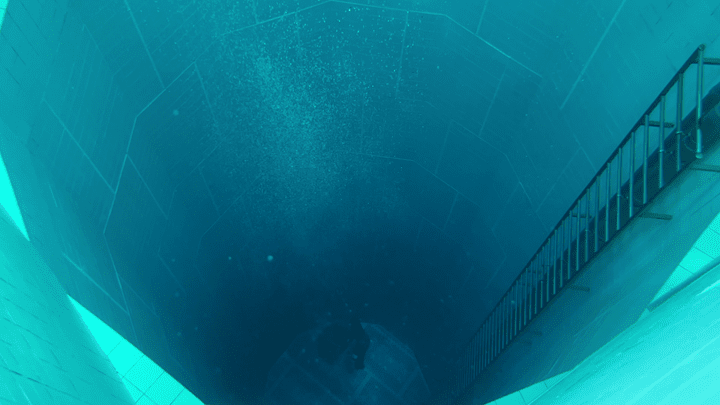
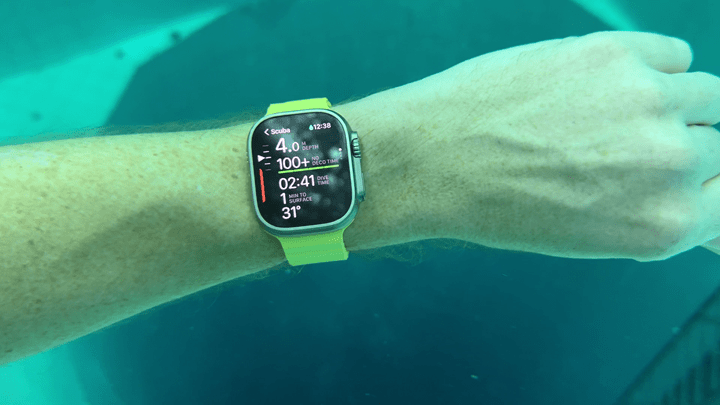

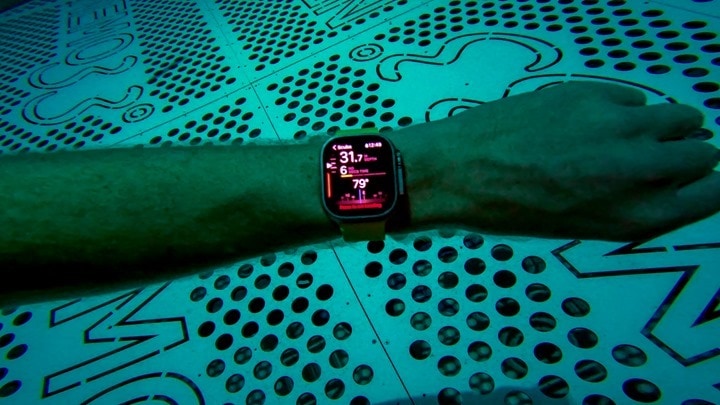

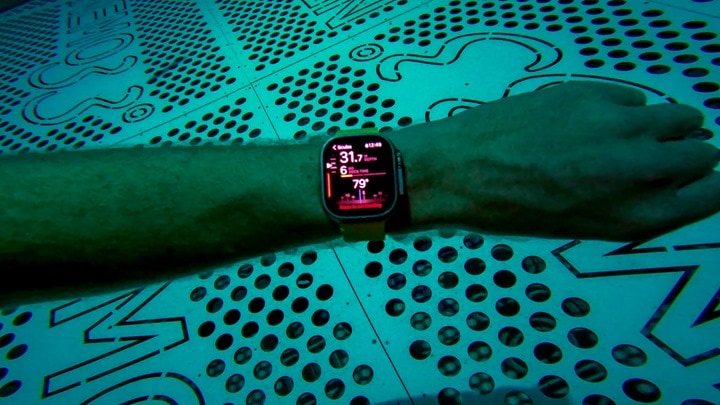
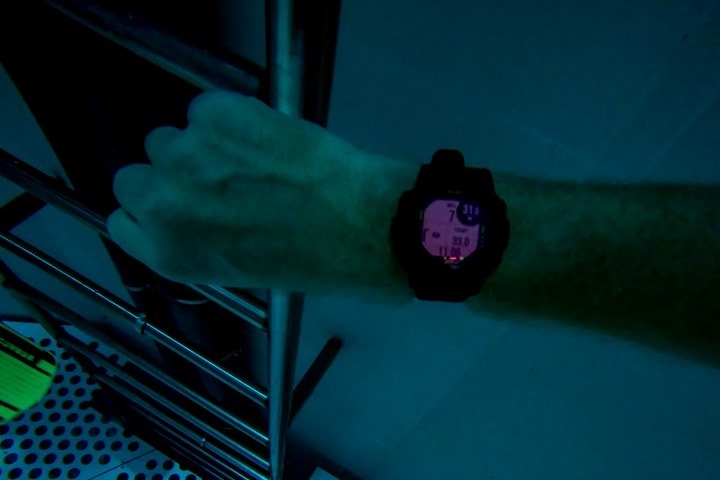
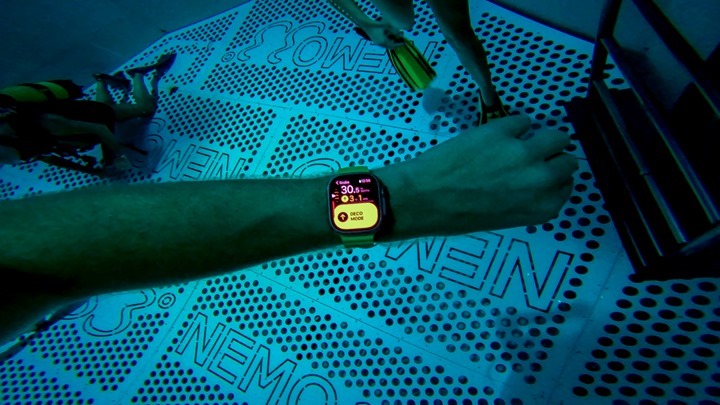

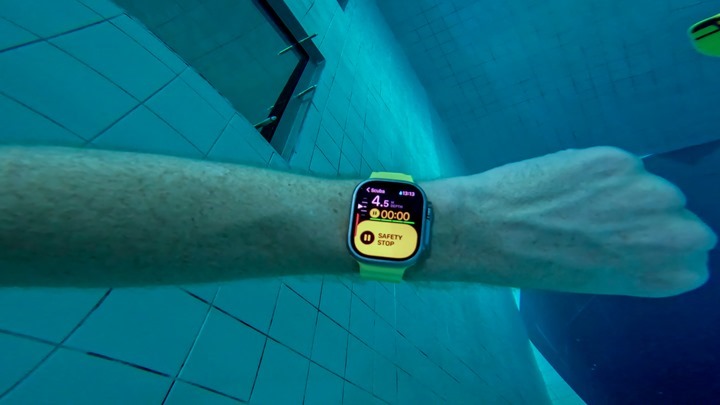

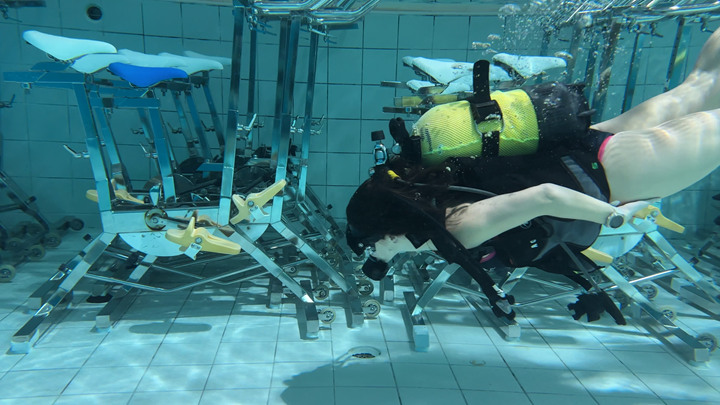
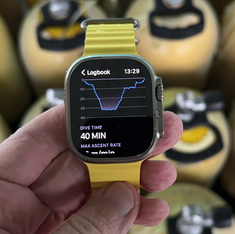
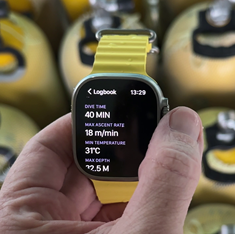

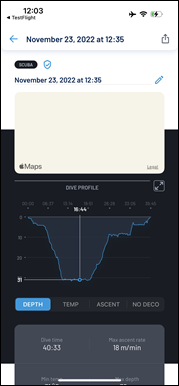
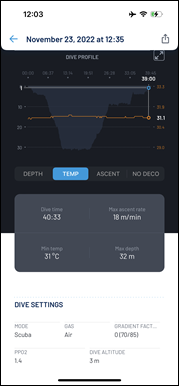
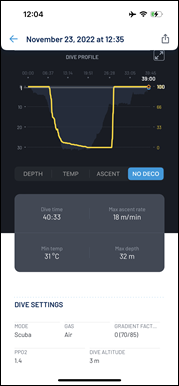
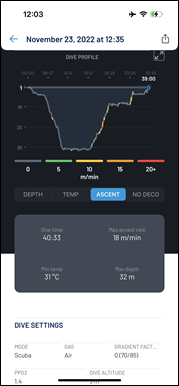
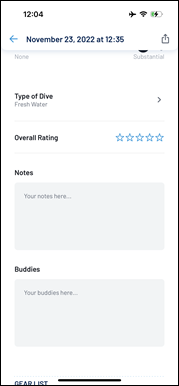
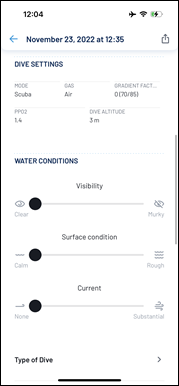
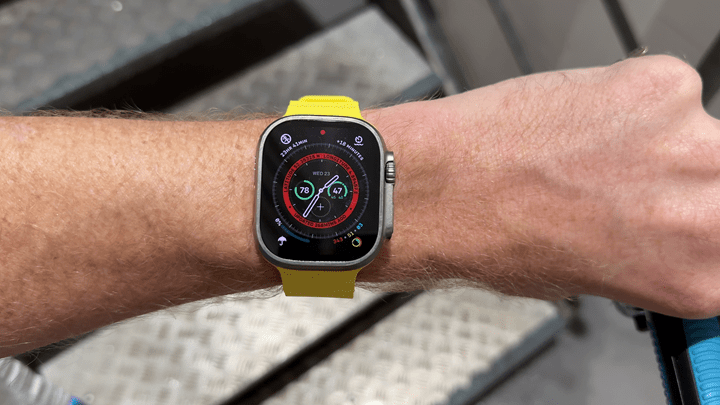
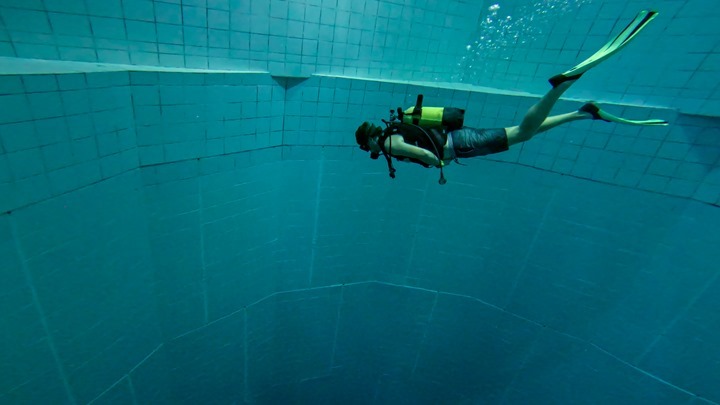
![clip_image001[12] clip_image001[12]](https://media.dcrainmaker.com/images/2022/11/clip_image00112_thumb-2.jpg)
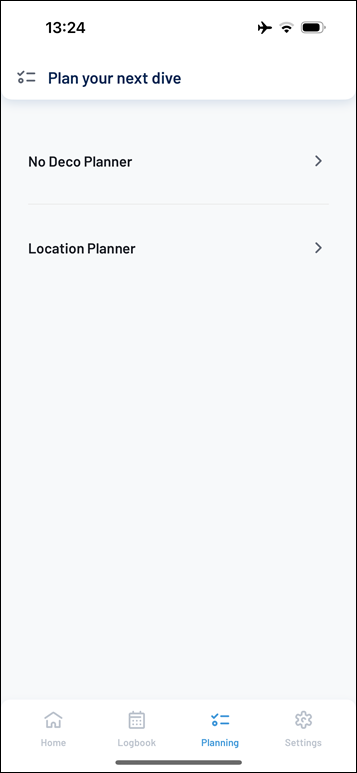
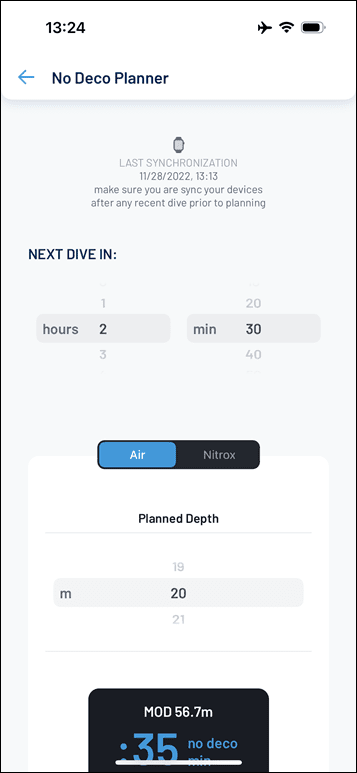
![clip_image001[14] clip_image001[14]](https://media.dcrainmaker.com/images/2022/11/clip_image00114_thumb.jpg)
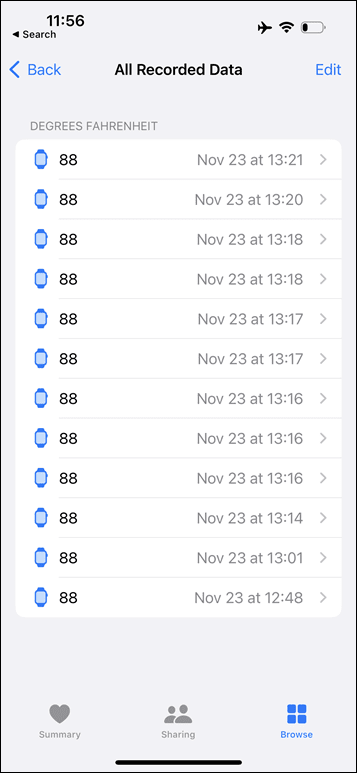
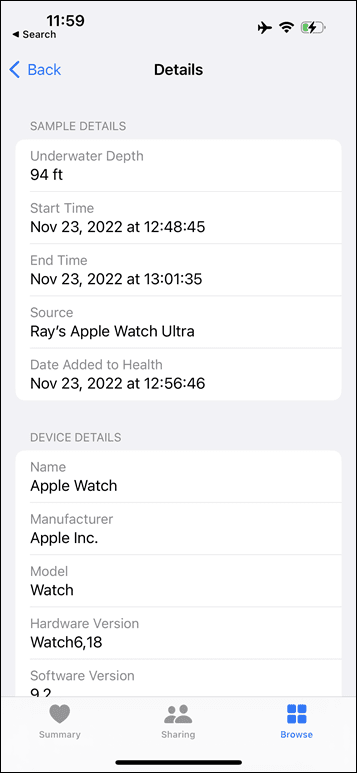
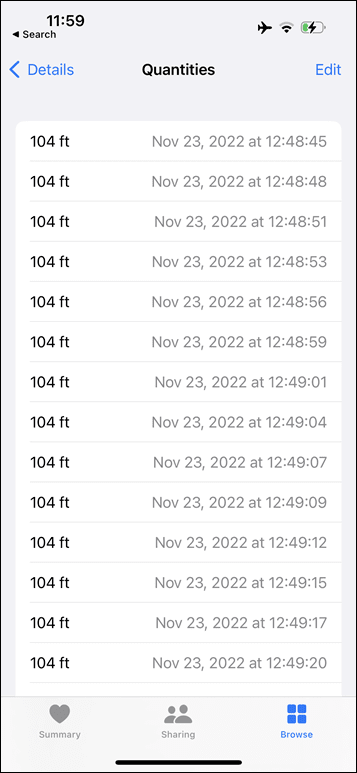
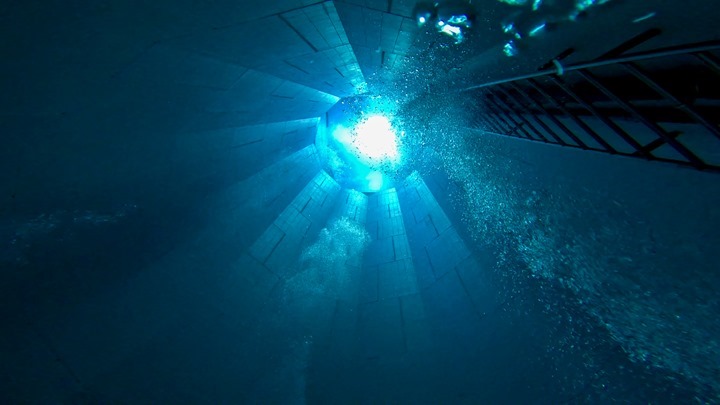
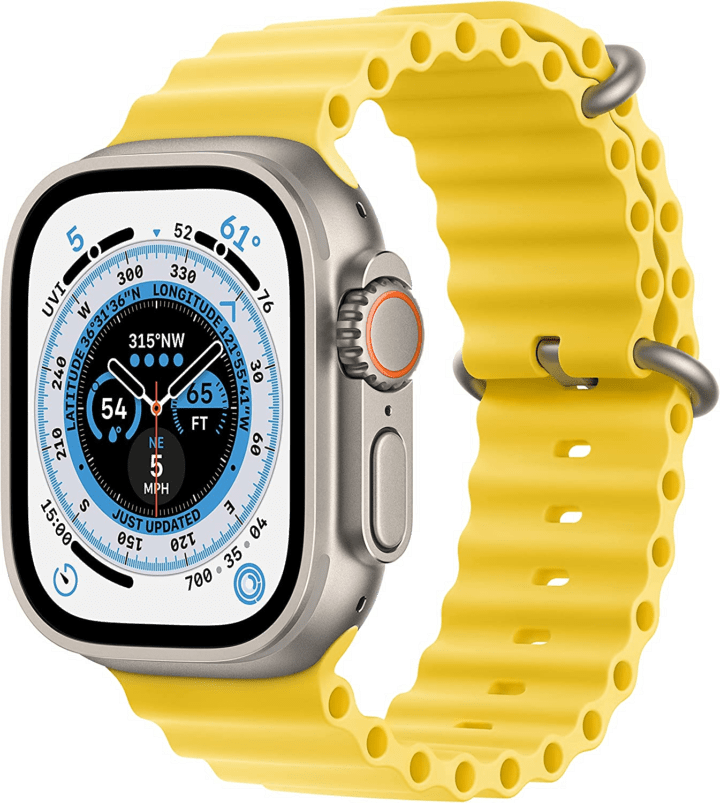





















Hi, Ray great info. Do you really see Garmin adding dive features to the future Fenix 8? They would have to radically change the cadence for updates on the Fenix based on what we have seen for the Descent series. They have been MUCH slower and more cautious releasing updates to Descent watches.
Between Apple doing this, and Suunto testing the waters with the Suunto 9 Peak Pro, I think it’s a very logical next move for Garmin. Perhaps not the entire Fenix 8 series, but certainly I could see something like the Fenix 8X, given the X variant has always had something ‘special’/new about it.
I agree that the Descent model firmware update rate is simply too slow – full stop. While I agree about being cautious, I’d argue that if Apple/Suunto can find ways to isolate these functions, then perhaps Garmin can as well. Having general firmware updates lag 3-6 months+ behind reduces the appeal for a lot of people.
It is a shame that the former market leader is reacting to the development of the competitors…
With terrible customer support and customer feedback ignorance, their philosophy will revenge one day…
They should have left at least leave the Forerunner series with a rectangular shape.
Like it is in the car industry (dashboards), motorcycles, Apple watch, etc…
From an analytical view, I would like to see the market share of active users/activity recorded device perspective (of course, diving included).
Slight typo: “33*F (91.4F)”
Thanks Brad!
“And for the legacy dive watch companies? Well, they’ll probably double down on both features related to technical diving, or, try and figure out how to make their smartwatch offerings more appealing.”
The thing that bugs me here is “legacy dive watch companies” is Suunto mainly, at least here in Europe. How hard could it have been for them to put Ambit/Spartan/9 features into their dive range years ago? I realise they’d have had software certification issues as did Garmin, but a Suunto Dx with multisport would have crushed it a few years ago. Their current D5 seems to have the hardware platform to achieve some of this with very little effort.
While it’s great to see Apple pushing this along, I’d still be much more excited to see Suunto back in the game, and Garmin keeping their dive range current with Fenix/Epix. I don’t actually mind the price premium of the Descent, the added hardware justifies this, as does the firmware and certification.
Thanks for buying the doc and giving some insights there, very interesting to see that extra info.
Indeed. That said, I’m optimistic that Suunto is seeing the light/potential. Obviously, they started down that road before they knew Apple was doing their dive thing, given Suunto had briefing with me and a device in my hand just a couple weeks after.
Their challenge though is figuring out how to port all that into their current-gen watches.
Agree, my assumption is that Suunto must have something coming as their lineup on the website for dive computers has gone haywire. The D5 is no longer there and the Dx looks outdated. I really hope they figure it out quickly as I love them as a company and they invented the dive computer watch as a format with Stinger so it would be sad to see them pushed out of the market.
I am looking forward to giving this a try. Just need to book me a trip somewhere to dive. Thanks for the detailed review as always!
The world is your oyster for you! Easy nonstop to anywhere in the Caribbean or Bahamas. Did some dividing in the Bahamas last spring. :)
Perhaps I overlooked/misunderstood it: have you worn the ultra and a G1? What depth showed the G1 at the bottom of the 33 m tank?
Yup. It showed 33.2 meters.
Attached.
I downloaded and installed the Oceanic+ app, but I had difficulties creating an account.
I selected my birth date, and then it said I had to check a check box. The check box was so small–it was almost invisible. I tried a few times, contacted customer support, but then finally checked it by tapping around to the left of the button.
I think they need to make the app’s check box bigger.
I then entered my account information, but the app didn’t like my chosen password. The app didn’t appear to let me edit my password once it flagged it as not acceptable. I had to start the app over, select my birth date, re-enter account information, and enter the password anew.
I think they need to allow the user to edit the password fields!
Once I did that, it created my account and walked me through some steps and synch’ed the app to my watch.
Dave
Call me paranoid, but there is zero reason at all that a dive app needs to know your date of birth and any company collecting such unnecessary data should not be trusted.
This is in breach of GDPR in EU countries (and elsewhere where the law has been copied).
They may be using age to gatekeep minors from using the app. Not sure why they need birthday, but, just a thought.
If that’s the case it’s completely ineffective as minors always work out they can type in a different date of birth to work around it. I guess it’s aimed at the US market who are generally less privacy savvy. And to be fair I’m more sensitive to it due to my job. When you know what’s being collected behind the scenes it’s a pretty scary world.
With your name, DOB and some Google-Fu it’s not hard to set up various identity fraud stuff (your mothers maiden name, for instance, is a matter of public record). While I may trust Apple to keep my data safe, I’m less inclined to trust the little guys. MyFitnessPal gave away a lot of people’s data at one point, so it does happen.
Well it’s easy for them to argue that age it’s KYC data in a diving app. If you don’t trust them with your birthday, then refrain from using the app or just input a fake date (not judging either way, it’s your data, it’s your decision).
Age is a factor in DCS risk – it may be part of their NDL calculations or BHL gradient selection.
That said, they could get by with just a birth year.
A dive watch should *always* show the depth forever, even if you go too deep.
If only for accident analysis or as information for chamber medical staff.
I do understand that it might be a liability thing. There are always divers who will go beyond their training (bounce dives for “bragging rights”, etc.).
As always, great stuff, Ray!
I tried out the new Oceanic app on a couple dives today and right now I wouldn’t trust it as my primary dive computer. I went on two dives, for the entire first dive all I could see was the surface screen. Under water I couldn’t do anything on the watch to get it to start logging the dive, or to show the depth. This seems like a safety issue to me. There should be no way you should be able to go on a dive and not at least see your depth. When I got to the surface I could see that it logged a dive of 4 feet then put me in the surface screen. I’m guessing it started and ended the dive after I jumped off the boat into the water and before everyone else got in and we started the dive. On the second dive everything worked fine during the dive, but after returning to the surface I noticed that it logged my dive and then a second 0 feet deep dive. After reviewing the dive log I noticed that a second 0 feet deep dive was also recorded with the first dive I did. When the app worked on the second dive it seemed to be good enough for recreational diving. The data it was showing matched the Garmin Descent MK1 I was also wearing. I don’t really like using the scroll wheel to change between data pages. I would rather tap the screen to change pages or have buttons. I’ll try the app again if they release an update but right now I’m not going to rely on it.
So the first one sounds like the dive didn’t start – but specifically, that you didn’t confirm that you’re “Fit to Dive”. It’s the screen that pops up as soon as you enter the water, and it triggers it. You can confirm it at any time though.
Even if you submerge again (the boat scenario), it’ll still be there. I’ve been playing around a lot with this with the waterproof test chamber as I was troubleshooting the compressor and had left the watch in there, so it was over and over triggering it.
That said, on the second dive where you got the 0-second dive after it (plus the regular dive), that’s what I was referring to as well up above. It’s not just Apple, but Garmin as well. I guess I just want both of them to have slightly more smarts there. If the divce doesn’t go below a meter or so, and only lasts a few seconds, then just pretend it didn’t happen and show me my final dive on the watch.
Ironically this is what the more basic Depth app does if i’m not mistaken. It only records an activity if it sees you going deep enough for long enough or repeatedly over a period of time.
Surely this can be easily fixed with an update, which as it’s not a core app, can be done outside of a full watch OS update.
I think this is key for Apple, make more of their core apps able to be updated without it having to be a full watch update.
I’ve gone on 2 more dives and haven’t had either of my previous issues happen again. I’m not sure if any of the recent updates fixed it or if they were caused by user error on my part the first time I tried using it. If I remember correctly I tried to put the watch into dive mode on the boat before I jumped into the water. That could be what caused it to log a partial dive when I jumped in. I do the same thing with the Garmin Descent MK1 and never had issues. I’d be ok with bad data from multiple dives being logged, but being under water with the watch not showing at least depth concerned me.
My main complaint now is that I don’t like how the safety stop warning takes over the watch. When I was going over some rocks above 15 feet depth the watch was vibrating every few seconds and I couldn’t see any of the data pages until I got over the rocks and went deeper. Not a big issue but was annoying at the time.
I also noticed that the no fly time complication was showing a no fly time of 3 hours right after 2 dives. When I press the complication and go into the app it shows a no fly time of 24 hours.
The time on the no fly time complication was cut off. When it got to 0h 59m I could see that the 0 was partially missing. When I edited my watch face and re-added the no fly time complication it matched the time in the app.
3 thoughts:
1. I’m pretty sure the upcoming u/w phone housing is a computer unto itself (i.e., with a depth sensor, etc.), so is more than just a case and maybe not so overpriced.
2. Multiple depth alarms (alone) should make the ‘Snorkelling’ mode pretty serviceable for Freediving (disclaimer: I’ve only used the included Depth app for Freediving – haven’t been out today with Oceanic+, so guessing a little on that).
3. I used the shark memoji for one of my watch faces, so I feel like I’ve won the lottery in that regard.
Interesting on the phone case depth gauge bit, I didn’t notice the small app overlay there. Looking at it that could be interesting, though, I’m not sure I’d pay extra for that feature. I suppose it depended on how often I were to use it.
Either way – Shark Memoji for the win!
If the case isn’t just a dumb case would it make sense to include the tank monitoring hardware in that as well?
It’s not just an overlay. The buttons on the case allow you to use the camera and the Oceanic+ app as a full dive computer, so no need for the watch. It is powered and communicates with the phone over Bluetooth (which must work because they are right next to each other). I wonder if you still need the subscription as well, though. @Ivan – that would be great. Depending on the user interface they could make a full featured computer/camera that on lots of dives you would be looking at constantly.
Great comparison and interesting write up. I quite enjoyed the part about what standards must be met for product certification.
While I agree that competition is good, I don’t fully agree that other dive computer manufactures will have to integrate smart features. I personally made the decision to go with a Shearwater Teric and not a Garmin for one huge reason… a dive computer is a piece of life support equipment. My Fenix is with me everywhere and gets bumped and jostled with daily use while the Shearwater stays protected until diving. I’ve also had my Garmin freeze on me a few times, of course it is annoying but a few minutes of missing data verses an abandoned dive (or worse getting bent) because the diving app is one of many features instead of the main feature. It would be nice to track my steps and sleep on dive trips though.
Also, keep in mind how many dive computers are still mounted to hoses or are large consoles, the people that use those love them and I don’t see them jumping to a dive computer smart watch. Though some of them might just dive with their Ultra and hose integrated computer.
I think the people that will adopt it the most will be rare vacation divers who do a day of diving maybe once a year and that is a little concerning for their safety. I wonder how many people will not realize that the native gage app isn’t actually a dive computer. Also, the fact that you have to subscribe to the app to use the dive planning features which allow you to see the NDLs is a huge safety concern.
Anyways, interesting article about an interesting watch. I doubt it will attract serious scuba divers and will likely lead to injuries in the rare recreational diver due to over confidence and lack of understanding of the watch.
“Also, keep in mind how many dive computers are still mounted to hoses or are large consoles, the people that use those love them and I don’t see them jumping to a dive computer smart watch. Though some of them might just dive with their Ultra and hose integrated computer.”
I think that’s really the main use case here. Which, is pretty much just the same as any other dive computer. The reality is, for most recreational divers on an OW or AOW certificate, they mainly just need to know their depth and time (+ air remaining). Most are using air, and will very rarely get into a scenario that requires a true decompression stop (versus a safety stop). Adding to that, most of these people will be diving with dive companies, where realistically the dive master is keeping you safe.
And for the most part, all of the above still applies for air-only recreational divers that are doing 1-2 dives at a local spot near them casually.
Where the water clarity gets fuzzier is those on the fringe of technical dives, or dives requiring decompression stops. Obviously, this supports that as demonstrated, but how long it’ll take folks to trust it is the real question.
Ok, like the apple ultra in combination with the Oceanic app. But will someone really seriously use the aw ultra with the Oceanic app as main diving device in open water (if you are diving > 20m up to 30m)? I would never jump out of a plane with a Garmin F7x etc. as my main altimeter device and use the jumpmaster app…? You Ray?
I guess my point (answered I think in the comment just above yours), is that virtually everyone has a depth gauge attached to their regulator (usually right next to their air). Thus, nobody is diving ‘alone’ with this watch, or any other ‘computer’.
So in that sense, I have no concerns with using this as my only dive ‘computer’. And anyone doing any non-guided dives, would have enough experience to do time backwards on air remaining for how long they’ve been in the water. And even at 30m, as I showed here, you’re just going to barely hit the edge of NDL before you’re probably gonna run out of air anyway (on a single tank, air dive). So your risk profile is exceptionally low if the device were to die.
As for jumping out of perfectly good airplanes? I’m good for now!
What is it about the AWU+App that would make you trust it less than any other multi-function dive watch, such as a Garmin Descent?
In the article you talk about staying on the bottom until the NDL timer expired on both watches and then starting to ascend to keep the dive a no-decompression one, but if I’m reading it correctly the G1 screenshot you posted above shows you hitting NDL several minutes before you started your ascent (though you cleared at about the time you started your safety stop). Did the AWU/App not also indicate anything like this?
Does the Oceanic app offer conservatism options? The first ‘big’ dive I did with my Descent G1 was a dive I’d been waiting to do for years (SS Thistlegorm wreck) which sits at about 30m depth. However, I’d barely levelled-off at 28m (on air) when I got deco warnings as I’d left the watch on the default ‘high’ conservatism preset which it turns out is *very* conservative. I make the point as even though watches may use the same deco algorithms, conservatism settings, or the option to adjust them, can still make a big difference, potentially limiting bottom time if you’re diving closer to (safe) limits.
So it’s interesting, the AW showed the countdown to 0 for No Decomp. However, as I was sitting there, I was pondering whether or not 0 indicated truly zero (0:00 to 1:00), or, within the last minute. I don’t think I ever got clarity on that. I gave it another minute, and then headed up.
It’s something I want to do side by side in the chamber. Sadly, I spent a ton of time troubleshooting three issues yesterday with it. Two electrical ones (easy, once I figured them out), and then that I think led to burning out the compressor a bit, since it’s not at full strength. So I ordered a new one, arrives either tomorrow or Thursday. Thankfully, that’s a cheap fix.
As for conservatism options, yup, you can adjust them. They’ve got some simple options, and more advanced options. I’d recommend checking out their FAQ page – it’s arguably the most impressive and in-depth FAQ page I’ve ever seen in my life. Seriously: link to oceanicworldwide.com
That said, I think the same point you’re making also applies to No-Fly times too. Historically speaking, dive operators have always said “Just wait 24 hours after diving”, but in reality, that’s mostly overkill, especially for shallower dives – or just one shallower dive. Garmin seems more realistic here*, whereas the Oceanic seemed to just call it 24 hours and done.
*They have an entire table on how they do it: link to www8.garmin.com
From the oceanic FAQ, which I agree, is extensive as heck, looks like you had to go into deco to get that no fly time:
No fly time:
Following the DAN recommendations, a single no decompression dive you will have 12 hours of No Fly Time. For repetitive no decompression dives, you will have 18 hours from the last dive made. For decompression dives, you will have 24 hours of No Fly Time. On a decompression dive dive where a decompression stop was missed, the No Fly Time will be set to 48 hours.
That cheap Cressi computer is a lot better than you make it out to be. The real limitation of using the Apple Ultra as a dive computer is the small numbers of the display. Real life dive conditions are murkier than a pool or tank. I suppose it’s OK for the occasional diver who bought the watch for other reasons, but I would not touch it for the kind of regular diving I used to do. A 40 M depth limit, yuck, that’s for PADI schools.
This app and this watch together are aimed at the vast majority of divers, who will be PADI qualified to 30m or so at most. Nobody who does technical and mixed gas dives is ever going to be expected to replace a Shearwater, etc. with this.
The vast majority of divers never make it to 50 dives. It’s a great activity but a pitiful industry.
40 meters covers 99.9% of diving, if not more. 100% of the rec diving anyways.
Below that, it is much different sport, as you lose the option for direct ascent. I’ve done five times that depth, but still enjoy the shallow and warm waters much more to be honest.
How did the battery life hold up for a dive?
Is the Apple data format open enough that Open Source dive log applications like Subsurface link to subsurface-divelog.org can use it?
The supported dive computers already includes Garmin (Descent Mk1 and M2).
Yeah, 3rd party apps could leverage the data by pulling it from Apple Health. I think there’s some bits that are a bit unclear, like how they define the start/end of a dive, perhaps just simply when the depth goes to something below zero, but the core depth/time/water temp data is there.
Thanks for the review Ray.
Do you have any plans to test a deco dive profile? I guess you could do a simulation in your table-top pressure tank.
If/when you get into a deco situation, it is literally life critical that your computer gives you a safe ascent profile with multiple stops, and updates that profile based on what you do along the way. Even the most basic Mares watch does a great job at this. It would be interesting to see that.
I’m of the view that ceasing to tell you depth beyond 40m is a disqualifying feature decision. It’s all very well to say you shouldn’t go deeper, but this is life safety equipment first and foremost if used in the context of a dive. It’s the equivalent of a car automatically unbuckling your seat belt if you go over 150mph because it expects you to be more responsible. Madness.
Yup, plan to test it.
I got in the replacement compressor on Friday evening, and will try and get it integrated on Monday into the system, so that I’m back in business. It’ll either be a two-second fix, or a miserable multi-hour fix.
But then once done I can simulate any dive profile.
Awesome Ray – can’t wait to hear the results. One test idea: try running a profile where you take the watch below the point where it shows depth and see if it still gives you the correct deco stops on the way back? Should be easy enough to compare if you throw a Garmin Descent in the test tank at the same time since they’re on the same algo. Eg: does it just stop showing depth info, or does it give up entirely on helping you ascend safely?
“But then once done I can simulate any dive profile.”
Ok, try some Comex Hydra profiles then :)
Haha…
Well, probably a slight caveat that the chamber is only rated for simulating 50m. That’s not to do with the tech of course, but the materials on the chamber/seals/etc…
Great review, thank you!! I, too, would like to test the deco modes in a small pressure chamber, but oddly enough I can’t get the watch and/or Oceanic+ app to recognize the pressure test in the chamber. The screen times out, and it never registers a depth, whereas other computers show the depth increase as normal. Did you do anything special with the Apple Watch to get it to recognize and track a “dive” when it’s in a water based pressure pot? It works perfectly in a pool and the ocean. Bizarre. Thanks!!
You are the definitely the best in the biz! So glad you dive, thanks for this.
Did it log a workout in Apple Health/Fitness? Any way to see HR and calories over the dive? I’ve always been curious and I know the Garmin’s do it.
No, it doesn’t log it as a workout. Sorta a different category.
For the price of annual contract, you can pick a very decent, I would say superior, second hand actual real dive computer.
People buy them after a few dives, and then end up quitting, so there are units for 50 usd/eur which have never been dived.
Thanks for making the review and all the efforts reading through the documents.
Clearly not a tool for technical divers but i guess that was not the targetted audience. Great alternative way to track your dives on holidays as most rental dive equipment is analogue or without exporting functions. I also like it that you can subscribe for a short period, which is helpfull for apple ultra owners on holliday. It could have been a handy alternative next to a rental kit during my 1 month thailand trip where i lug along my regulator and dive computer but only made a couple of dives.
Hopefully a manufacturer in the future can also add an external pressure transmitter which can be attached to your regulator first stage and connects to the apple ultra to display oxigen usage. This approach is already available for some years by brands like suunto and mares.
Thanks Ray!
Excellent info.
I apologize if this was already covered in a post,
Do you know if I can manually add previous dives to the Oceanic app log?
Thanks a ton,
Dan
The reason you got a safety stop for a NDL dive is most likely due to safety, to be 100% sure you will not get any DCS symptoms. People might be a bit too late, a bit too fast, might not be in top physical condition, etc.
Ray,
Now that you have reviewed the Garmin Descent MK1 and the Apple Watch Ultra plus Oceanic app, is there any chance you’ll circle back and review the MK2, MK2s, and G1 variants? I have found myself in the market for dive computers for me and my two daughters and one of them is in need of upgrading from her Garmin Instinct Solar. Additionally, the Atmos Mission 2 is an interesting entry with both sport and diving features all with sapphire glass and only at $499. Anway, I’d really like to see this as it does consolidate some purchases and is becoming more common with Garmin’s three entries, Apple, and now Atmos in the game for watches with combined sport and diving features. Hope I can push you in that direction. Thanks in advance.
I used Ocewnic+ for the first time diving the Great Barrier Reef in March. Worked like a champ. Thhe only thing I do not like is the limit to recreation limits. (130 feet). I am going to be learning side mount so I can go dive the wrecks in Chuck. Now I have to see if you have tested the Garmin Descent Mk2s.
Thank you for such a great article! Do I need to connect either my phone or the watch to cellular service/data/signal to use the app? Assuming I am at a dive site without any cellular service, can I use the watch and app as a dive computer?
Is there any way you’ve seen or are aware of that allows for syncing between Oceanic+ and Garmin Dive? I have a bunch of dives in Garmin Dive and would like to move them to Oceanic+
I was really excited about using the Ultra as a dive computer until I found out about tbd subscription. In your testing, did you come across any real justification for it aside from corporate greed? Personally, I’d rather pay for an app up front than continue to needlessly pay a subscription, unless it requires access to the developers servers, pays recurring licensing fees, etc.
Bob,
I would like to know the information, too, but what I can tell you is you can do a one-month subscription and then cancel afterwards. I’m not sure if that will be enough justification for paying them or not, but this is the solution I came up with for my personal use. It would make sense if the price covers R&D, licensing, etc. I hope this helps you.
Joy
Thanks. I don’t think either Apple nor Oceanic will miss me, but out of principle, I’ll probably buy something else. I just can’t bring myself to feed the subscription beast.